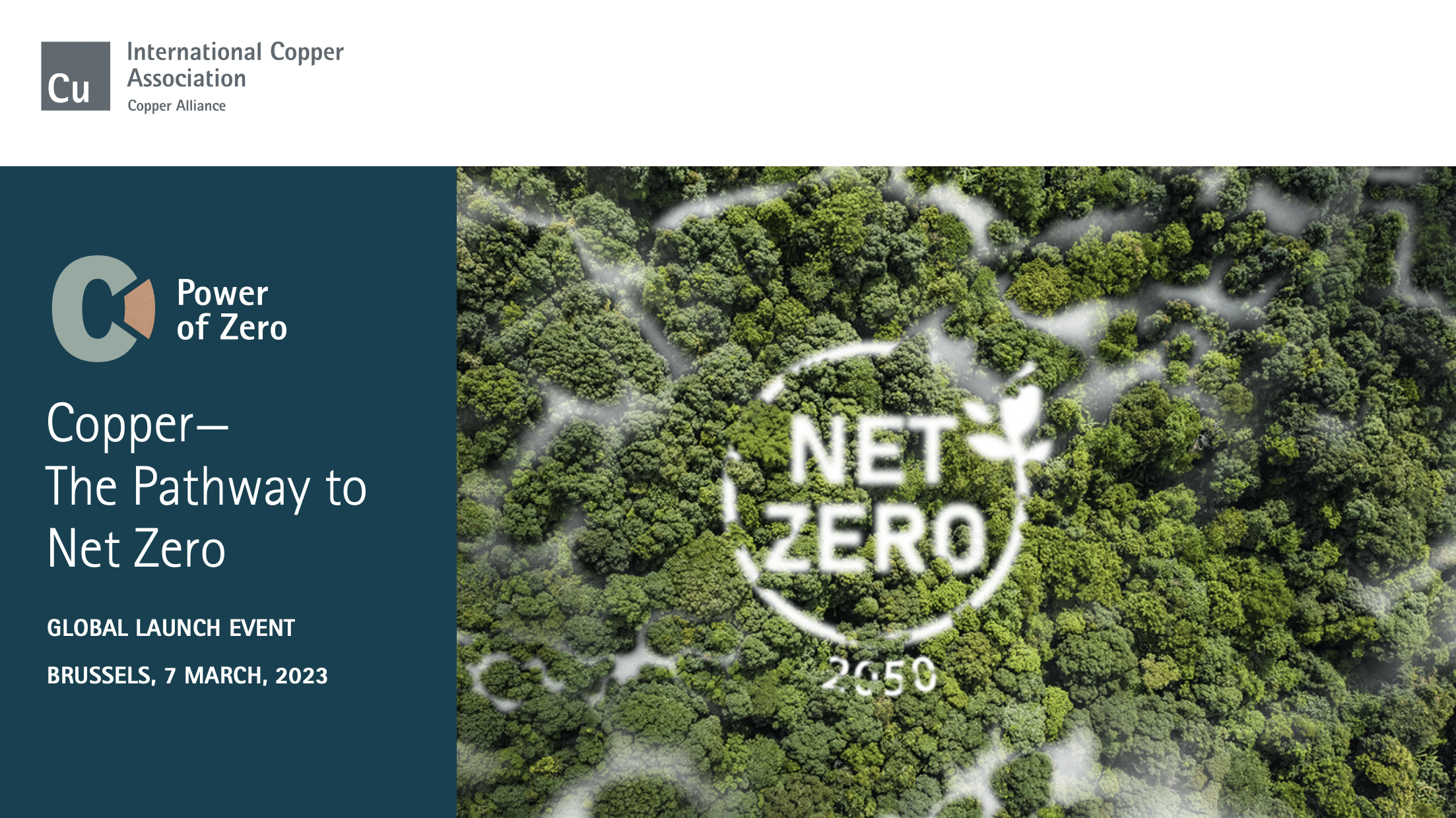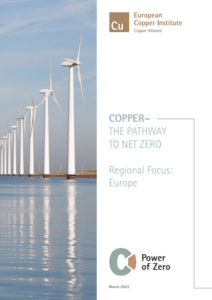Copper—The Pathway to Net Zero
Regional Focus: Europe
The International Copper Association (ICA) and its members have performed an in-depth, robust analysis, based on a comprehensive set of data, facts and sound hypotheses, to determine how fast GHG emissions of copper production can be abated with market-ready and developing technologies, at what cost and under what conditions. The conclusions of this analysis are set out in the ICA decarbonisation roadmap, Copper—The Pathway to Net Zero.
The report Regional Focus: Europe has been developed to set out in more detail the decarbonisation pathway of copper production in Europe. It is complementary to Copper—The Pathway to Net Zero. It outlines ICA members’ commitment to decarbonising the production of copper in Europe and presents strategies for bringing the carbon footprint of copper mining, smelting, refining, and recycling in the EU as close as possible to net zero by 2050.
Download the Policymaker Summary
Our commitment to decarbonising copper production
The members of the International Copper Association (ICA) in Europe and globally commit to
- a goal of reaching net zero Scope 1 and 2 greenhouse gas emissions by 2050;
- to actively engage with their value chain partners to bring Scope 3 emissions as close as possible to net zero by 2050.
This is a collective ambition. The intermediate trajectories of individual ICA members companies are likely to vary given differences in the scope of activities and operating conditions of companies. This ambition is based on current knowledge and may therefore evolve.
This target to decarbonise production hinges on a set of key enabling conditions.
Abating Scope 1 and 2 emissions
A significant percentage of Scope 1 and 2 emissions from European copper production can be reduced by using four categories of market-ready and developing technologies:
These technologies should allow to reduce the Scope 1 and 2 GHG emissions from European copper production by an estimated 30 to 40 percent by 2030, 85 to 95 percent by 2040 and approximately 90 to 95 percent by 2050, compared to the baseline. Research and development efforts will be needed to unlock additional decarbonisation technologies that should allow reaching a full reduction of Scope 1 and 2 emissions by 2050.
Abating Scope 3 emissions
Addressing the reduction of Scope 3 emissions is more challenging, as the interdependence between actors in the value chain requires a partnership approach to maximize potential abatements, which are not under the sole control of copper producers. The availability of up-to-date, quality data on emissions presents an additional challenge.
Based on a preliminary assessment, the following main levers were identified to abate Scope 3 emissions of copper production in Europe:
- decarbonised electrification
- near shoring
- alternative production technologies or fuels
- efficiency gains
- increased circularity
The efforts of the global copper industry to abate GHG emissions will also reduce the Scope 3 emissions of European copper producers as the carbon footprint of imported copper concentrates and anodes decreases.
Combining these levers may allow the EU copper producers to reduce Scope 3 emissions by around 10 to 20 percent by 2030, 40 to 50 percent by 2040 and 70 to 80 percent by 2050.
Enabling conditions for reaching the decarbonisation goals of ICA Members in Europe
Copper producers cannot meet their decarbonisation targets alone. The below six enabling conditions set out the areas where support is needed from other stakeholders for ICA members in Europe to be able to achieve their decarbonisation targets.
- Access to a sufficient amount of fossil-free, competitively priced electricity
- Availability of decarbonisation technologies from manufacturers at sufficient scale
- Increased end-of-life collection rates of copper-containing products
- Access to financing
- A global level playing field on carbon pricing
- A coherent regulatory framework that incentivises investments
The way forward
ICA members commit to:
- Measuring progress through an aligned methodology for calculating the carbon footprint and a regular, transparent monitoring mechanism
- Advancing decarbonisation in a responsible way, supporting and enhancing communities and the environment
- Updating the Pathway to Net Zero and the Regional Focus: Europe at least every 5 years, or more frequently if needed
- Engaging in partnerships to address the challenge of decarbonisation
ICA members in Europe look forward to actively engaging with suppliers, customers, communities and policy makers to ensure the contribution of copper and the copper industry to achieving the objectives of the European Green Deal, in a responsible and sustainable way.


